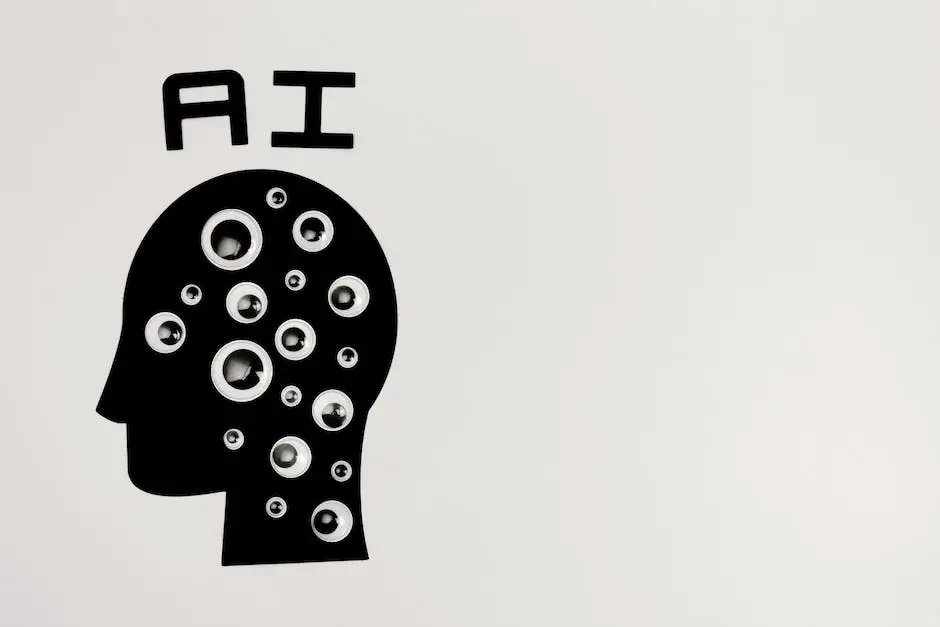What is generative artificial intelligence? This article explains this often encountered word that we read and hear whenever we talk about AI. Some examples are given. Read on to find out.
The advent of Chat GPT developed by Open AI in November 2022 ushered in a new era of artificial intelligence applications that changed how we produce online content. Now, we can produce content: articles, images, and videos in minutes instead of hours of conceptualizing, writing, revising, and publishing unique content. What we just need now are ideas, as well as imagination, to inform people about ways on how to improve their lives.
Artificial Intelligence (AI) has significantly evolved, establishing itself as a transformational force in various sectors of society. Traditionally, the field of computing was tasked with helping people accomplish tasks more efficiently, but AI has pushed those boundaries, embarking on more complex tasks those that require ‘intelligence’. Among its remarkable capabilities, the subdomain of generative AI stands out, carrying a unique potential that promises innovative solutions across multiple industries.
In this exploration, we aim to demystify AI, further delving into generative AI, its machinery, real-life examples of its applications, and charting a brief trajectory into the future that this technology is poised to shape.
Table of Contents
What is Artificial Intelligence?
Artificial Intelligence Defined
Artificial Intelligence (AI), unlike traditional computing, is a branch of computer science that involves creating smart machines capable of exhibiting human-like intelligence. Unlike the programmed, input-output nature of traditional computing systems, AI systems are designed to mimic cognitive functions associated with human minds such as learning, problem-solving, planning, language understanding, and perception. These system capabilities are achieved through a combination of algorithms, data, and computing power.
Characteristics of AI
One of the fascinating characteristics of AI is that it’s designed to learn and become better as it gains more experience, similar to how humans learn. This learning process is known as machine learning, a subdomain of AI that uses statistical techniques and algorithms to allow systems to enhance their performance on a specific task over-time without being explicitly programmed.
AI is not one monolith; it is comprised of various subdomains, apart from machine learning. These include natural language processing (the technology used in voice recognition systems like Amazon’s Alexa), robotics (machines designed to carry out tasks), and computer vision (computers’ ability to identify and process images just like a human would), etc.
The AI’s principle of operation revolves around feeding a computer system a considerable amount of data, which the system uses to make predictions or decisions without being specifically programmed to perform the task. The efficiency of AI’s decision-making or prediction capacity improves over time as it is exposed to more data.
Generative Artificial Intelligence
A notable subfield of artificial intelligence is generative AI. This is an application of AI that creates new content, such as images, sounds, texts or anything else that can be varied. While most AI systems are discriminative and designed to categorize input data into predefined classes, generative AI goes a step further to generate output that’s entirely new, often based on a set of conditions or parameters.
Generative AI goes a step further to generate output that’s entirely new, often based on a set of conditions or parameters.
For example, generative AI is used in the music industry to create new pieces of music based on specific genre rules or elements of existing creations. Generative AI also generates realistic human faces, which don’t represent real individuals but are entirely constructed by the AI based on its understanding of what a human face should look like.
AI Applications in our Everyday Life
Artificial Intelligence (AI) and its various subcategories have woven themselves into virtually all segments of our world today.
On the healthcare front, AI is utilized for more precise interpretation of medical images, thereby fostering early and accurate disease diagnosis. A specific subset, Generative AI, dramatically expedites pharmaceutical innovation by producing countless chemical compound combinations as potential drug candidates, thus shortening the timeline for new drug market entry.
AI’s reach extends to the finance and transportation sectors too, where it sharpens credit scoring accuracy, identifies fraudulent transactions, and fuels the operation of autonomous vehicles and drones.
In the manufacturing industry, AI optimizes production processes, resulting in an overall increase in productivity.
To truly grasp the essence of artificial intelligence, and more specifically, generative AI, we must understand the paradigm shift they represent in computing. Their ability to emulate human-like intelligence and create new content is redefining a multitude of industries and altering our perception of what machines are capable of accomplishing.

Delving into Generative AI
Distinguishing Features of Generative AI
Generative Artificial Intelligence (AI) specializes in emulating human creativity. It is an AI subspecies that uses algorithms to autonomously and dynamically generate content, which could vary from visuals and music to written pieces. This facet distinguishes generative AI from typical programs, which merely execute predefined tasks, and reactive machines that only respond to current inputs without taking into account historical data or future implicits.
Generative AI vs Discriminative AI
Generative AI differs from its counterparts, such as discriminative AI, in that it focuses on generating new content rather than differentiating between existing content.
For example, a generative AI would create a new song by understanding the patterns and structures common in music, while a discriminative AI, on the other hand, would differentiate between songs to classify them into genres.
Usage of Generative AI
The applications of generative AI are broad, given the vast array of fields which involve the creative process. A widely-used application of generative AI is in the field of image modification and generation.
By understanding the components of an image, generative AI can modify existing images or create entirely new images. It can also be used for creating original visual artwork, bringing a fresh perspective to traditional art forms.
Generative AI Generates Written Text
The application revolves around creating sentences and paragraphs while ensuring the resulting text makes sense, is cohesive and relevant to a given topic. It’s often used in content generation, chatbots and even as writing assistants which can suggest improvements to text.
How Generative AI Functions
A key method of generative AI is Generative Adversarial Networks (GANs), a kind of neural network. GANs operate via a generator and a discriminator playing a game against each other. The generator creates new content, while the discriminator uses models to determine if the content is ‘real’ or ‘fake’.
The generator readjusts its models and improves its pseudo-generative abilities based on the feedback it receives from the discriminator. This iterative process is recurrent and allows the generator to continuously refine its outputs.
A New Age with Generative AI
In a nutshell, generative AI represents a significant departure from conventional AI methodologies and approaches, distinguishing itself through its inherent ability to innovate and create. It goes beyond data analysis, predictions, and classifications, generating new ideas, content, and creations without requiring explicit human intervention.
The potential of generative AI is astounding, and it’s attracting increasing interest across a variety of industries. With heightened investment in research and development aimed at enhancing this technology, the future of generative AI promises to be immensely exciting.

Machinery of Generative AI
The Mechanism of Generative AI
To better understand generative AI, it’s important to define it as a specific field within artificial intelligence that utilizes deep learning protocols to autonomously produce content. Using a combination of neural networks and machine learning techniques, generative AI allows devices to create text, images, sound, and designs that are strikingly similar, if not identical, to those created by humans.
Neural Networks and Machine Learning in Generative AI
At the heart of generative AI are neural networks and machine learning.
Neural networks are systems of algorithms that mimic the operations of the human brain to interpret sensory data, a method called pattern recognition.
Neural networks work through the process of machine learning, a type of artificial intelligence that arms computer systems with the capability of learning from and improving their performance based on data, without being explicitly programmed.
Both computational paradigms are the foundation stones for creating AI systems that go beyond traditional pattern recognition to generate a novel output.
Deep Learning and Generative AI
Deep learning is an advanced level of machine learning which structures algorithms in layers to create an artificial neural network that can make intelligent decisions on its own. Deep learning, operating through algorithms, is a dynamic method used by generative AI for detecting patterns and then creating data based on those detected patterns. The objective is to enable machines to learn unsupervised from unstructured or unlabeled data.
Algorithms and Parameters in Generative AI
Generative AI operates through a combination of learning algorithms and parameters. Algorithms, or a set of statistical processing steps, guide the learning process of AI, pertinent in pattern detection and data generation.
Since neural networks, the engine running generative AI, keep adjusting their parameters based on the input data, the crucial role of algorithms is undeniable. Parameters, on the other hand, are a type of internal variable which an AI model uses to adjust its performance, allowing the model to fit the data more accurately.
Data Training in Generative AI
Data training is a critical segment of Generative AI, particularly in strengthening the AI model’s performance. Training data is the initial dataset fed into an AI model to help it learn and understand how to apply algorithms. It involves feeding the AI large amounts of data and allowing the model to adjust its internal parameters to best represent this data.
The model utilizes the patterns and structures learned from the training data to generate new data. This learning cycle, prominent in generative AI, is an iterative process that progressively improves the model’s ability to create.
The Foundation of Generative Artificial Intelligence Technology
The core of generative Artificial Intelligence (AI) lies within its foundational technologies like machine learning, deep learning, and neural networks. These essentials revolve around methodical algorithms, intricate parameters, and comprehensive data training. As such, they act as the gears and pulleys of this AI category. By blending these elements, generative AI is paving the way for autonomous content creation. This progress offers infinite potential for myriad commercial applications and scientific experiments.

3 Practical Examples of Generative AI
1. Entertainment Industry and Generative AI: An Emerging Bond
The entertainment realm is witnessing substantial impacts of generative AI. AI technology has been harnessed to generate unique content across various artistic domains.
For example, platforms like OpenAI’s MuseNet have astoundingly composed tunes with never-heard-before harmonies and melodies. In the visual arts, AI systems like DeepArt and PaintsChainer (now Petalica Paint) have successfully created original artworks.
In the world of video gaming, generative AI has shown its immense potential. By autonomously developing unique characters, storylines, and even whole game levels, game designers can establish massive, intricate virtual universes without the need for manual designing of every component.
Nevertheless, the blooming capabilities of generative AI also come with certain uncertainties. It raises complex questions around the ownership rights of AI-generated content, leading to extensive debates within the intellectual property and copyright domains. Yet another constraining factor is the potential misuse of generative AI for creating deceptive deepfake videos and spreading disinformation.
2. Generative AI in Healthcare
In the healthcare industry, generative AI presents enormous potential in augmenting diagnostics and treatment plans. Generative AI models are being used to predict the spread of diseases, create personalized treatment plans, and even generate synthetic patient data for research purposes.
Such models can take large amounts of patient data and generate detailed, predictive models of disease progression. For instance, DeepMind’s AlphaFold system used generative AI to predict the structure of proteins, significantly advancing drug discovery efforts.
Despite these benefits, generative AI can also pose risks in healthcare. Sensitive health data could be exposed through generated models, leading to privacy and security concerns for patients and providers.
Furthermore, predicting health outcomes is a sophisticated task, and relying heavily on AI might lead to inaccurate results or misjudgments.
3. Exploring Generative AI in Manufacturing
Generative Artificial Intelligence or AI plays a remarkable role in the modern manufacturing industry. A subfield of AI, known as Generative Design, can generate multiple optimized product designs using the given set of parameters. This process, much faster than traditional design methods, can develop hundreds of design variations in less time.
Moreover, AI can simulate and predict potential complications in the manufacturing process. Given enough data, AI systems can revolutionize the manufacturing process by creating entirely new methods.
Despite the many advantages, the introduction of AI in manufacturing has sparked conversations about job security and AI ethics. This is due to the potential job losses as a result of reduced human involvement. Also, the efficiency of AI systems mainly depends on the quality of the training data, meaning problems could arise from biased or corrupted data.
Future of Generative AI
The Impact of Generative AI on Various Sectors
Generative AI is a rapidly evolving technology with the potential to transform many sectors in near future. One prominent example can be seen in the creative industry. Here, generative AI paves the way for a new era of content creation, producing art, music, architectural designs, and advertisements by learning from a dataset without explicit human intervention.
In the realm of healthcare, generative AI shows promise in disease progression prediction, drug creation, and modeling of biological systems. It carries similar potential in the field of climate science, where it can model complex climate systems and generate predictions for a range of future scenarios.
Potential Ethical Considerations
The advancement of generative AI poses a number of ethical considerations. For instance, as the technology becomes more advanced, there will increasingly be a need to ensure that it does not infringe upon intellectual property rights. For example, if an AI is trained on copyrighted music or artworks and produces similar works, it could lead to legal disputes about ownership and rights.
Moreover, the ability of generative AI to generate deepfakes, which are realistic synthetic media where a person in an existing image or video is replaced with someone else’s likeness, poses ethical and privacy concerns. Deepfakes can be used maliciously to spread disinformation or for fraudulent purposes, leading to infringements on privacy and potential harm to individuals.
Need for Regulatory Overtures with Generative AI
Given the potential implications of generative AI, there is a growing need for regulatory overtures to mitigate risks. Regulatory bodies need to provide a framework that sets guidelines for the use and development of generative AI technologies.
The framework should address issues such as the accuracy and reliability of the AI, fairness and bias reduction, transparency of the algorithms and decision-making processes, and security measures to protect against malicious usage of the technology.
Data privacy issues will also need to be addressed, particularly in relation to the use of personal information by AI for the purpose of generating content or predictions. It will be vital for regulatory bodies to ensure there are strict guidelines about what data can be used by AI, especially in sectors such as healthcare, where patient confidentiality is paramount.
In addition, regulatory bodies should consider how to attribute responsibility and liability for the actions of generative AI. Given the autonomous nature of the technology, there needs to be clear guidelines about who is responsible when things go wrong.
Summary
In essence, the future of generative AI presents exciting prospects across various sectors. However, it also raises potential ethical considerations that must be carefully addressed. It’s crucial for regulatory overtures to act promptly, providing a clear framework that promotes the responsible use of the technology, protects users and copyrights, and ensures accountability.

The prospects of generative AI are vast, offering countless opportunities to reshape the way industries operate, while also raising ethical and regulatory challenges. This technology carries the potential to breathe life into the dreams of many and transform various dimensions spanning entertainment, healthcare, and manufacturing sectors.
As we look ahead into a future that’s increasingly driven by AI, continuous engagement with generative AI becomes imperative for ensuring that it serves as a tool for progress, rather than becoming a disruptive force. The future of generative AI holds promise, challenge and intrigue, making it an exciting frontier in the continued evolution of artificial intelligence.



